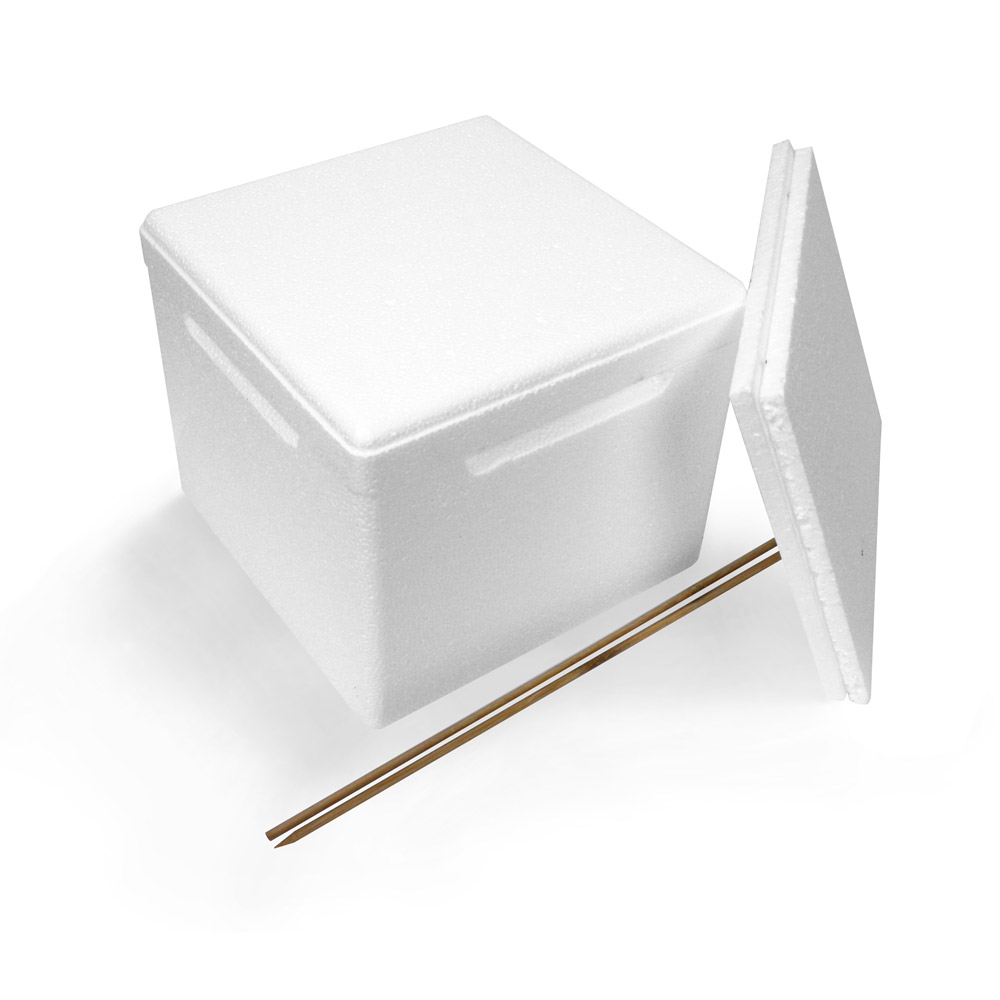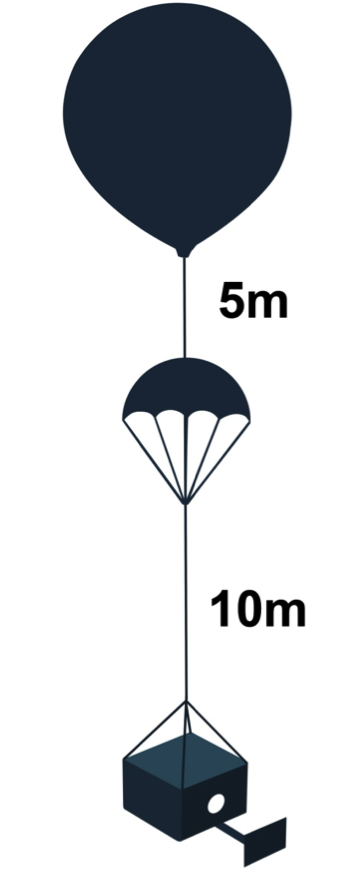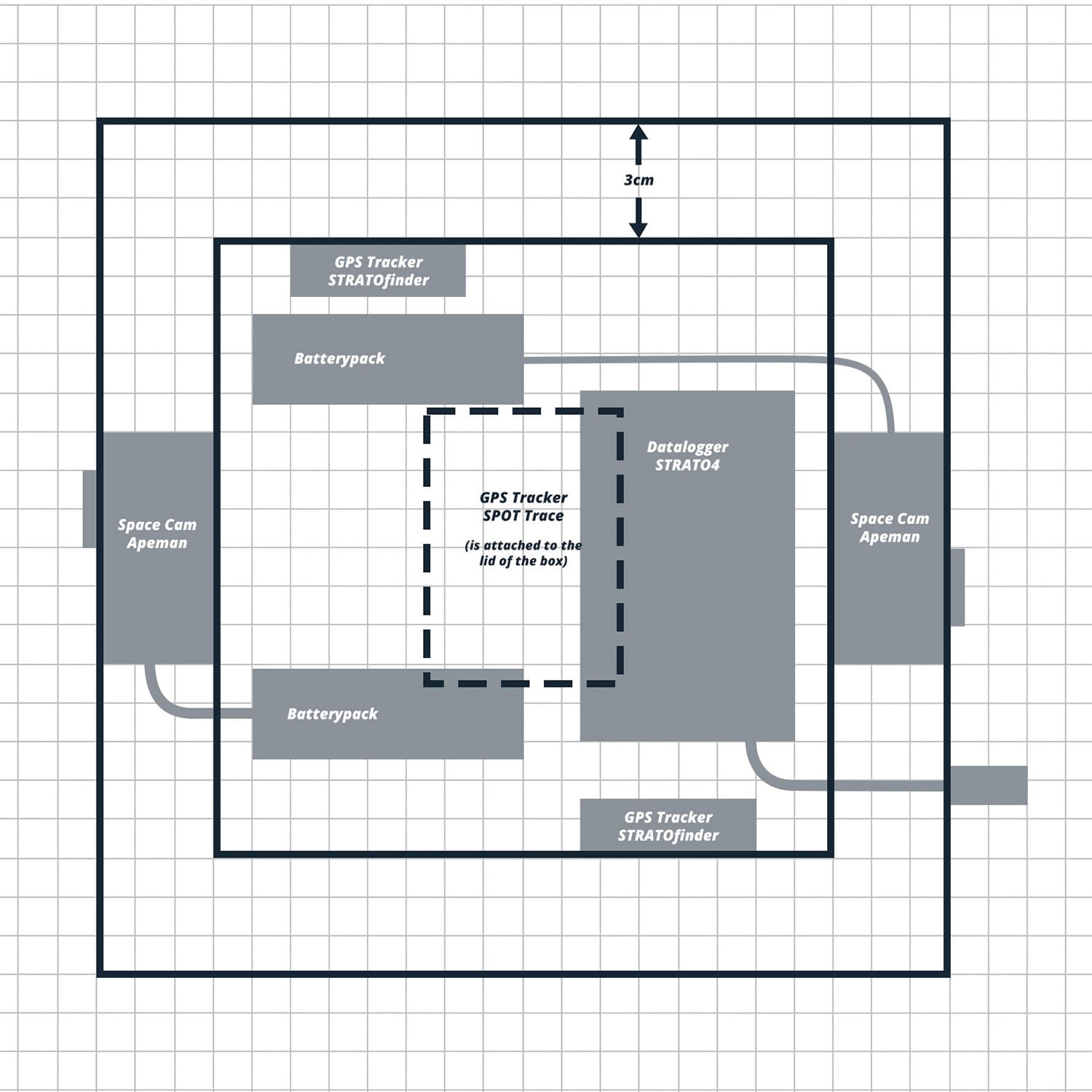» CONSTRUCTION OF THE STRATOSPHERIC-PROBE «
 In general, your probe should be as light as possible, and installed equipment such as cameras and GPS trackers must be protected from the extreme temperatures of the stratosphere. Above all, these properties are fulfilled by the light and easy-to-use material polystyrene. Furthermore, polystyrene insulated well from the cold. In addition, the buoyancy in case of a water landing can be helpful.
In general, your probe should be as light as possible, and installed equipment such as cameras and GPS trackers must be protected from the extreme temperatures of the stratosphere. Above all, these properties are fulfilled by the light and easy-to-use material polystyrene. Furthermore, polystyrene insulated well from the cold. In addition, the buoyancy in case of a water landing can be helpful.
Before you install your equipment inside the probe and install holes for the cameras, make a list of the equipment and use a sketch to see how your probe should be constructed. It is important that the equipment is well arranged, and the weight of the equipment is well distributed. A better weight distribution, leads to more stable shots later on, as less rotational movements occur. Furthermore, the equipment should be installed such that there is enough space for the technology, which can be fitted decently and accurately before the start.
If you want to build your own probe: Your probe should not be too big, since too much polystyrene increases the total weight, therefore your weather balloon has to carry more helium / balloon gas for the lift. The more gas there is inside your balloon, the less space the gas will have to expand with increasing altitude as the atmospheric pressure drops.
Thus, the motivation should basically be to build an as light as possible, yet stable and well insulated probe. If you build your own probe from polystyrene plates, you must make sure that you work as accurately as possible, so that no cold air can penetrate through the “joints” of your probe. The individual walls should not be glued with a polystyrene adhesive, but use fabric tape, since polystyrene adhesive alone is not sufficient, and can become brittle in the cold. Duct tape is much better suited for this purpose. The walls of the polystyrene probe we can provide are already connected to each other so that there are no joints and thus no cold bridges can arise. The cameras and sensors can now be installed accurately in the probe.

In order to minimize the rotational movement of your Styrofoam probe, you should build wings right and left to your probe. The wings can also be made of polystyrene and attached to the sides. Thus, your probe is “wind-packed” during the ascent and will be carried relatively stable by the wind due to the larger attack surface. Thus, the wings serve as a mechanical image stabilizer, so to speak.
The video shows the assembly of the polystyrene probe including the installation of the camera. The polystyrene probes have an optimal size for several cameras and experiments and are nevertheless light and very stable. To connect your probe with the parachute and weather balloon on the day of takeoff, you should bring the special cord in the lid, as you can see in the video.
The cords between weather balloon and parachute, parachute and polystyrene probe should have a length of about 5m and 10m.






 Deutsch
Deutsch  Français
Français  Español
Español 





















